Eco-Friendly Pet Products Gain Momentum with Recycled Plastics

Pet product manufacturers are embracing recycled plastics and long-life design to set new benchmarks for sustainability.
Most pet toys are made of plastic, are often cheap to replace, and are easy to throw away. However, their environmental impact is becoming harder to ignore. The pet products market in the UK is projected to reach US$ 4,402.0 million in revenue by 2030.
You can also read: Post-Industrial Recycled Content Means Better Plastic
According to a Grand View Research report, the market is expected to grow at a 5% CAGR from 2023 to 2030. This reflects rising pet ownership and increasing demand for premium, personalised, and sustainable pet accessories nationwide.
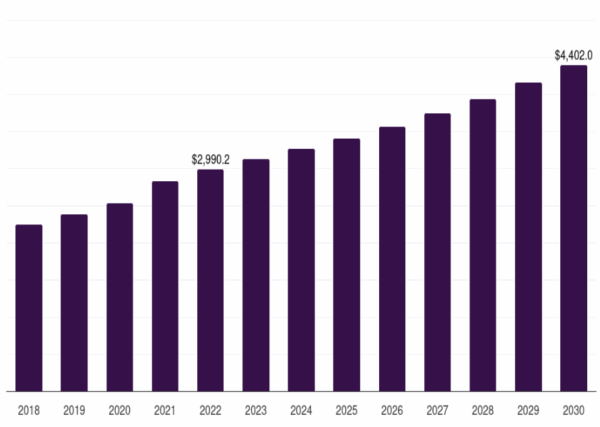
UK pet products market, 2018-2030 (US$M). Courtesy of Horizon Databook
A 2023 survey by Pets International and Yummypets showed 65% of pet owners buy new toys twice yearly. This data, reported by GlobalPETS, highlights the high turnover rate in pet toy consumption.
However, many of these toys are poorly designed for recycling and eventually end up in landfills after limited use. This growing waste stream poses a challenge for plastics engineering, especially as demand for pet products rises globally.
In response, some manufacturers are turning to recycled materials and reusability to reduce environmental impact from discarded pet products. They also adopt circular systems that reuse production scrap and collect used items to be repurposed or remanufactured.
Case Studies: Pet Product Manufacturing Companies Leading the Way
Several companies have begun to adopt recycled plastics in pet product manufacturing at a commercial scale. These early movers offer valuable insights into workable systems and material strategies.
Billy + Margot® (UK)
When Billy + Margot launched their new raw dog food range, they prioritised both sustainability and practicality in packaging. Despite exploring alternatives, plastic proved the most hygienic, stackable, and freezer-friendly option. To reduce its environmental impact, they partnered with Prevented Ocean Plastic™. Their new tubs are made from 100% recycled PET, fully traceable from coastline to container, and are 100% recyclable.
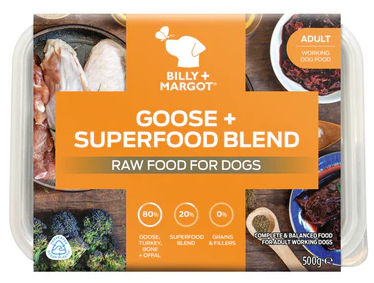
New raw dog food range. Courtesy of Billy + Margot.
Spectra Packaging & The Pawfume Shop (UK)
Spectra Packaging and The Pawfume Shop in the United Kingdom have launched a collaborative Eco Range. It uses 100% Prevented Ocean Plastic (POP) PCR PET. This prevents ocean-bound plastic waste while maintaining shelf appeal and product durability.
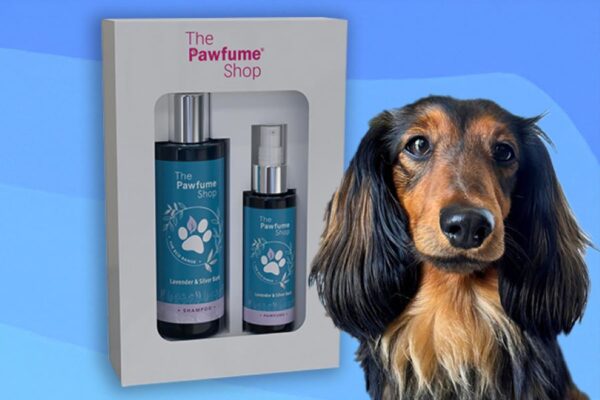
Spectra teams up with The Pawfume Shop to deliver sustainable packaging for their new Eco Range. Courtesy of Spectra Packaging.
Benyfit Natural (UK)
Benyfit Natural, known for its ethical sourcing and small-batch raw dog food, requires packaging material that preserves freshness and saves space. While plastic performed best functionally, the brand avoided virgin plastic by sourcing recycled content through Prevented Ocean Plastic™. Their tubs are made entirely from PET waste recovered from coastlines and are fully recyclable. This approach balances product integrity with environmental responsibility.
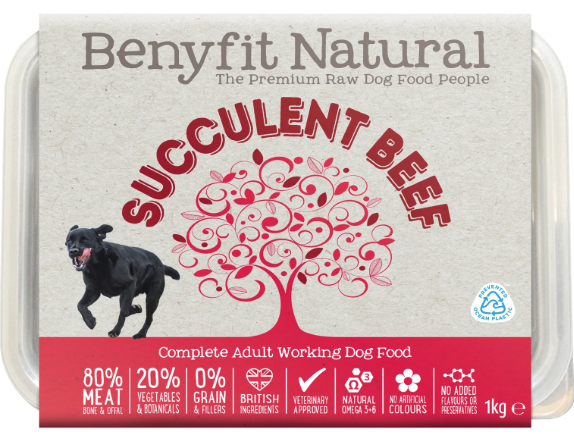
Benyfit Natural Dog food tub made from plastic collected from coastal towns. Courtesy of Benyfit Natural.
Betty & Butch (UK)
Betty & Butch extended plastic circularity to pet accessories, using recycled PET fabric and stuffing in products like their Sea Turtle Puppy Toy. Each toy saves between 4 to 7 plastic bottles from landfill, while their dog beds repurpose up to 52 bottles. All products meet compostability or recyclability guidelines and reflect the brand’s low-impact philosophy across packaging, toys, and textiles.
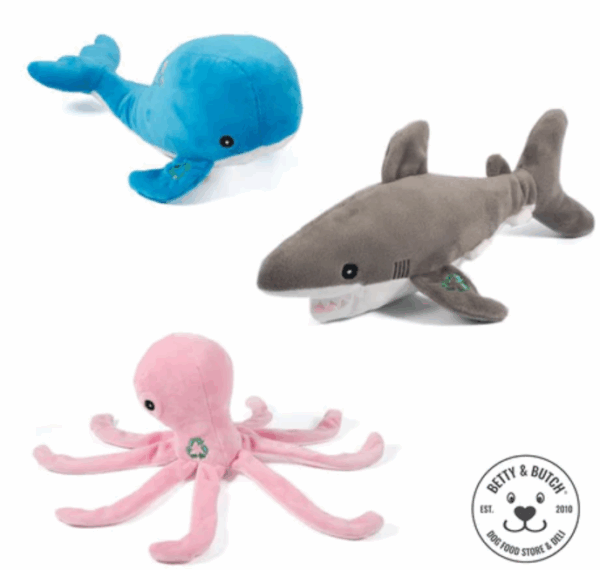
The Best Eco-Friendly Dog Toys and Products by Betty & Butch. Courtesy of Betty & Butch.
Petmate (USA)
In the United States, Petmate diverts over 60 million pounds of post-industrial waste yearly. Its EcoTEC™ resin achieves a 1:1 ratio between waste collected and resin produced. The company’s dog kennels now contain 95% recycled polypropylene, certified by Intertek. Petmate also participates in Walmart’s Project Gigaton. Since 2019, it has helped eliminate 118 metric tons of carbon dioxide. They reuse over 90% of its production scrap internally. It has also upgraded its machinery to improve energy efficiency.
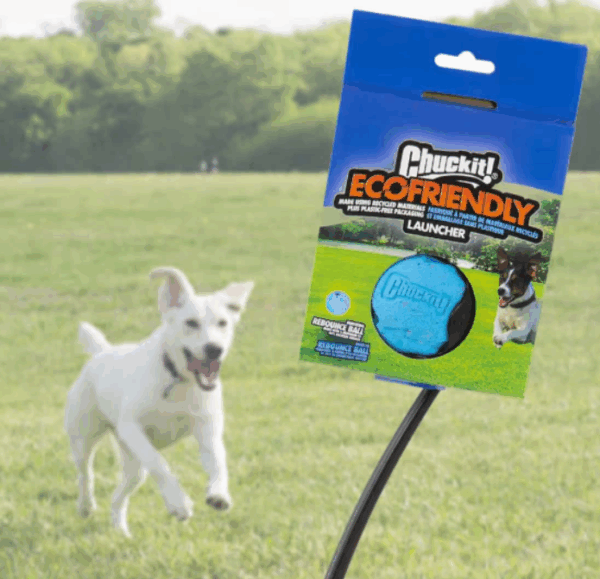
Chuckit! EcoFriendly Launcher designed with over 95% recycled plastic. Courtesy of Petmate.
West Paw (USA)
West Paw uses 100% recycled fiber stuffing in its pet beds and runs a closed-loop recycling program for plastic toys. Through its Join the Loop® system, worn-out toys are sanitized, ground, and remanufactured into new ones without losing durability. Moreover, this proprietary process allows repeated recycling cycles, helping reduce landfill waste and supporting West Paw’s goal of zero-waste production.
Moderna (Belgium)
Moderna has steadily increased its use of recycled materials, reaching 38% of annual raw material volume in its latest reporting period. This includes certified use of post-industrial and post-consumer recyclates in its injection-moulded products. Also, the company’s transition from virgin to recycled content began in 2020 at 5.4%, growing to 10% in 2021 and 20% in 2022.

Gusto Bowls made out of 98% Recycled Plastic. Courtesy of Moderna Products.
These examples highlight scalable material selection, process control, and consumer engagement efforts. However, access to consistent-quality recycled resin remains a common challenge across markets. Ongoing supplier partnerships and improved waste collection systems may help address this.
You can also read: Anticipating Challenges as Demand for Recycled PET Increases.
A Paw-sitive Future
The growing use of recycled materials in pet product manufacturing highlights the industry’s commitment to sustainability. Companies like Billy + Margot, Benyfit Natural, and Petmate lead the charge, incorporating recycled ocean plastics and post-industrial waste into their packaging and products. These initiatives reduce environmental impact and pave the way for a more sustainable, closed-loop plastics economy. As these brands continue to innovate, they set a new standard for eco-conscious pet care, encouraging others in the industry to follow suit.
